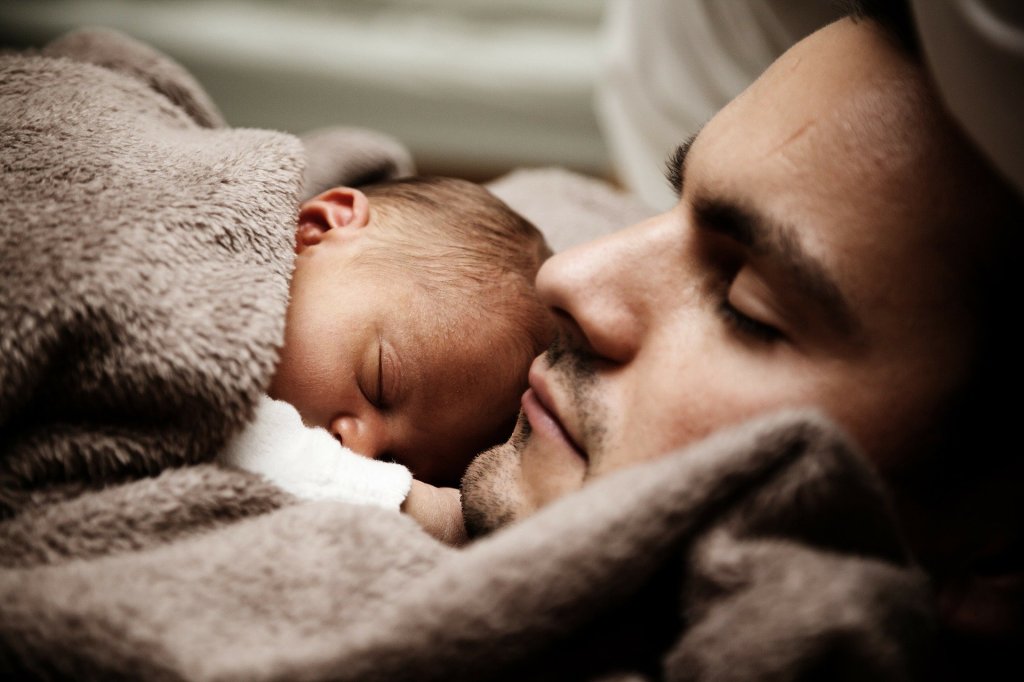Sleep training can be one of the roughest periods of parenthood. The goal is to put your infant in their crib or bassinet and allow them to completely fall asleep without any external help, but every parent who’s been through sleep training knows that’s far easier said than done. All too often, sleep training just results in a lot of crying (possibly on both your parts), a lot of stress, and fears of developmental or emotional issues caused by “just letting them cry it out.”
If you’re finding that sleep training isn’t working for your infant and it’s causing simply too much stress on your household, you may want to consider an alternative. After all, there’s more than one way to get a baby to go to sleep. Check out these alternatives to sleep training, including a no-tears method.

This nighttime parenting method addresses your child’s individual needs
“Nighttime parenting” may sound like a fancy method, but it’s probably pretty close to the type of parenting that you do with your child on a daily basis already. Nighttime parenting is a method that’s especially useful for those who worry about the long-term consequences of the “cry it out” method, when it comes to their child’s mental and emotional development.
The nighttime parenting method is simple. When your baby cries, you show up and then look for what your baby needs in order to go back to sleep. Sometimes that means being held, sometimes that means food, and sometimes that even means co-sleeping.
While the nighttime parenting method may mean more trips up in the middle of the night or that it takes more time for your baby to learn to sleep on their own, some parents find they learn to especially cherish those nighttime parenting sessions, knowing that their child will eventually start sleeping on their own, so they ought to enjoy the extra time while they can.
The no-tears sleep-training method provides more natural solutions to getting your baby to sleep
The no-tears sleep-training method employs a lot of the same practices that adults use for getting better sleep. It includes establishing a regular sleeping schedule (both with naps during the day and at night), going to bed earlier, making any and all changes very gradually, establishing a relaxing nighttime routine, and creating a sleep-friendly space.
Just like an adult, if your baby knows that they go to sleep at 7 p.m. each evening, and that the hour before that is filled with a bath, book, and lullaby, they’re more likely to eventually begin feeling sleepy around that time, as it becomes routine. Similarly, if you create a dark, quiet, and soothing environment for your baby, they’re more likely to stay asleep and feel safer in their sleeping space.

Maybe it’s you who needs the change, not your baby
Many parents turn to the cry-it-out method of sleep training simply because they’re exhausted themselves and need to get a little more uninterrupted sleep. However, it might not be a good choice for your baby and, in some cases, not work at all. In these instances, it might be useful to take a look at your own sleeping patterns and how you can make healthy changes that help you better parent regardless of your child’s sleep schedule.
Look at your own bedtime habits and see where you can make healthier decisions that might allow you to more easily tend to your child’s middle-of-the-night routines. Perhaps you need to start going to bed earlier and spending less time with tech ahead of bed. You might also need to stop napping or sleeping in on the weekends, so that your body has a consistent sleeping schedule.
No sleep-training strategy is a sure win for all children
There’s no one sleep-training strategy — cry it out, no tears, or otherwise — that’s a sure win for every single child. Every child is different, and so is their sleeping patterns. You may find that one of your children responds well to the no-tears method, while your other child simply screams until they get what they want. The important thing is to be patient and continue trying various ways of creating a soothing and safe sleeping routine and environment for your child. Before you know it, this time in your child’s life will pass, and they’ll be sleeping silently through the night with ease.

